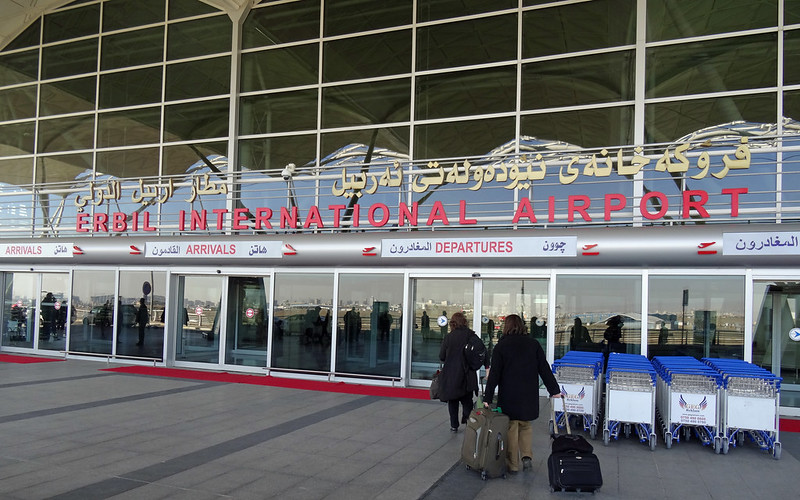On the night of September 11, 2021, explosions were heard at Erbil International Airport in the eponymous capital city of Iraqi Kurdistan. It was the latest in a series of rocket and drone attacks carried out by Iran-backed militias that targeted the US troop base on the grounds of that airport over the preceding year. This time, however, US air defences at that base proved their worth.
Two drones were used in the attack. Witnesses heard at least six explosions. The US-led coalition confirmed that its air defences on the base were activated. They successfully intercepted the drones, which both crashed – one inside and the other outside the base’s perimeter. There were no casualties.
The US has MIM-104 Patriot air defence missiles for intercepting ballistic missiles at Erbil airport accompanied by a Counter rocket, artillery, and mortar (C-RAM) system for close-in point defence of the base from threats like short-range rockets or drones. The C-RAM destroys these small incoming targets with its 20mm HEIT-SD (high-explosive incendiary tracer, self-destruct) ammunition.
The US deployed these systems at Erbil airport in mid-2020. Before that, the coalition base there was completely unprotected from such threats. The air defences were put in place a few months after Iran fired ballistic missiles at US bases in Iraq in January 2020, including the one in Erbil, in retaliation for the US assassination of Iran’s Major-General Qassem Soleimani a few days earlier.
However, until the drone attack earlier this month, neither system seemed to have been used to prevent rocket or drone attacks. The first time one of these militias targeted Erbil airport was in September 2020, using rockets. Those rockets landed in a field near the facility and did not cause any casualties or damage.
Last February, another larger barrage of rockets targeted the airport, with some landing in residential areas of Erbil city. That attack killed a civilian contractor at the coalition base and caused some damage. Other civilians were also injured. The C-RAM wasn’t activated during that attack, possibly out of fear that its incendiary rounds might have inadvertently hit civilian high rises adjacent to the airport.
April saw the first use of a ‘suicide’ drone against the airport. And while that attack did not cause any casualties, it was pretty sophisticated and briefly rattled the Americans. The coalition had tracked the drone until the last 10 miles of its flight when it entered a civilian flight path until reaching its target, a hitherto unrevealed hangar in the US base operated by the CIA.
“The attack deeply concerned White House and Pentagon officials because of the covert nature of the facility and the sophistication of the strike,” noted a May report in the Washington Post.
As with the February attack, one likely reason the US military was wary of using the C-RAM to defend against incoming drones was the risk of accidentally hitting civilian aircraft, which could prove fatally catastrophic. The foiled September 11 drone attack shows that it has managed to reduce this risk and enable its C-RAMs to knock incoming drones out of the sky effectively.
In an interview with the local Kurdistan 24 news agency, US Colonel Scott Desormeaux outlined how the Louisiana National Guard unit under his command established mechanisms to effectively counter this new drone threat. He cited the dire risks involved in activating air defences by a busy civilian airport.
“If we shoot down a manned aircraft that is coming in. This goes contrary to what we are here to do, which is to protect lives,” he told the outlet. “So, we had to quickly understand how to deconflict our airspace to be able to kill that drone that is coming in.”
Working in coordination with the local Kurdish security forces, Desmormeaux’s team establish procedures whereby, upon detecting an incoming aerial threat, they can “quickly divert manned aircraft to clear the airspace for us to make a shot on an unknown object coming into the base.”
“And it worked flawlessly since we put these new processes in place,” he added.
Having reduced the risk of C-RAM rounds hitting civilian aircraft or nearby buildings, the coalition now has a robust capability to stop future drone attacks against the airport base.
Encouraging to see coalition air defenses hose down both the drones with the minimum of fuss. Air defenders are now cleared to hit unmanned vehicles at will if they stray where they should not. Erbil was well-defended.
— Michael Knights (@Mikeknightsiraq) September 14, 2021
“Encouraging to see coalition air defences hose down both the drones with the minimum amount of fuss,” tweeted Iraq expert Michael Knights after the September 11 attack. “Air defenders are now cleared to hit unmanned vehicles at will if they stray where they should not. Erbil was well-defended.”
This also reduces the risk of more conflict breaking out.
As the May Washington Post article also noted, “In the absence of effective defences, the drone threat now raises the prospect of a sudden escalation of violence. Each fresh attack triggers a flurry of communication as US officials seek to determine whether Americans have been killed or injured.”
So long as these procedures and air defences remain in place, the dire risk of any future drone, or rocket, attack killing US personnel in Erbil airport is markedly reduced, which in turn means “the prospect of a sudden escalation of violence” between the US and Iran-backed militias is also substantially reduced.
Consequently, aside from merely “hosing down” enemy drones, the Erbil C-RAM could help stave off another unwanted conflict in Iraq.
Image credit: Jeffrey Beall

